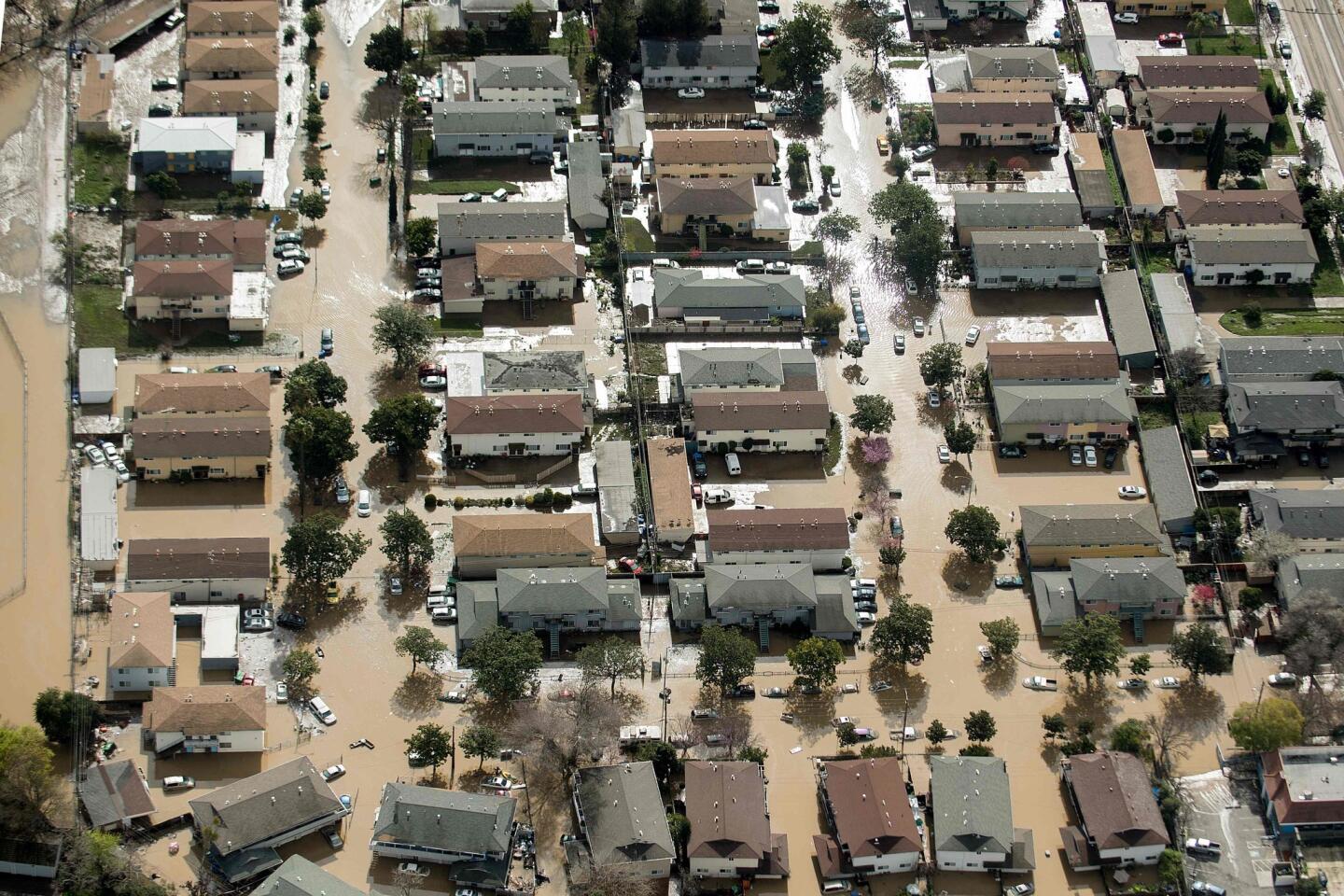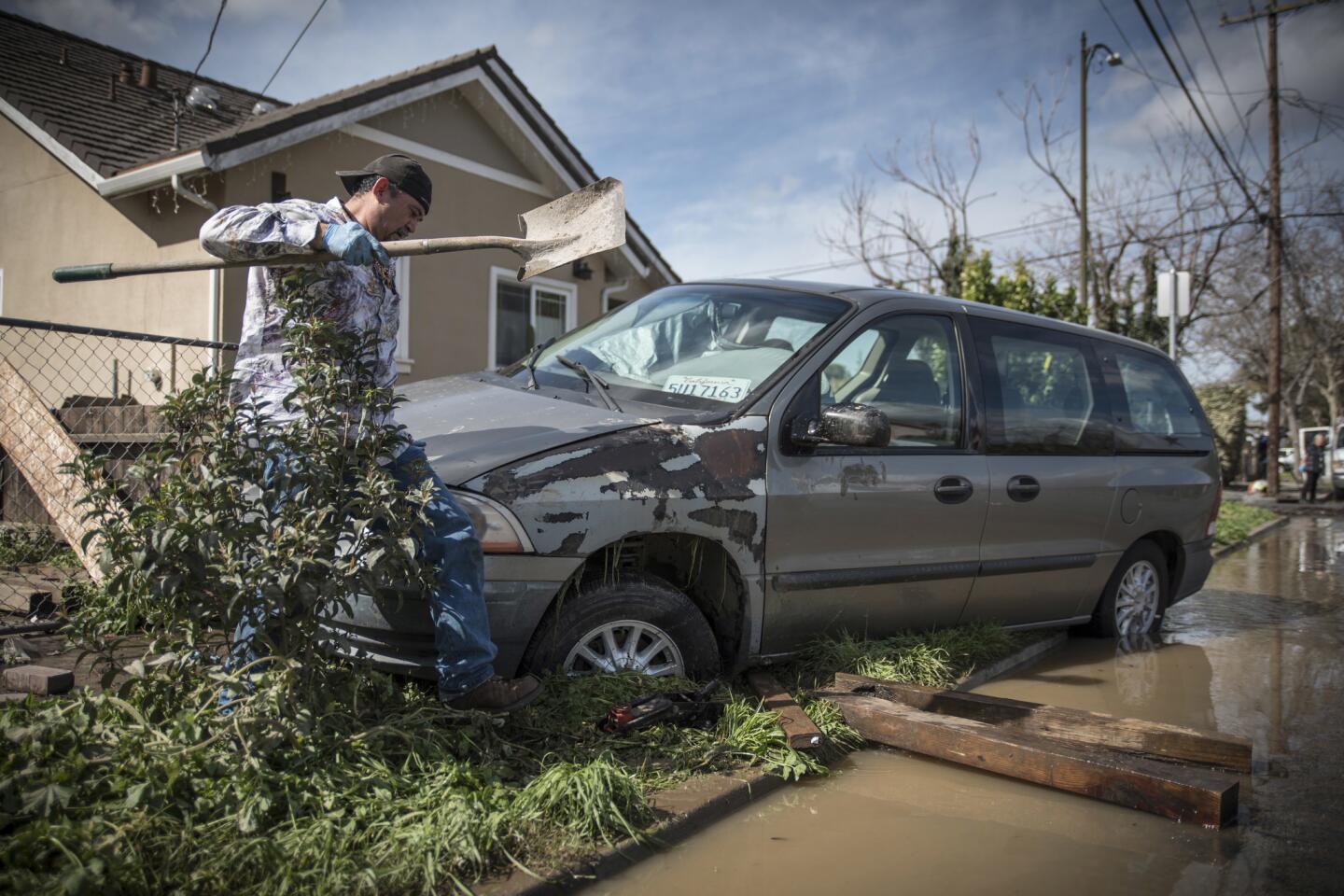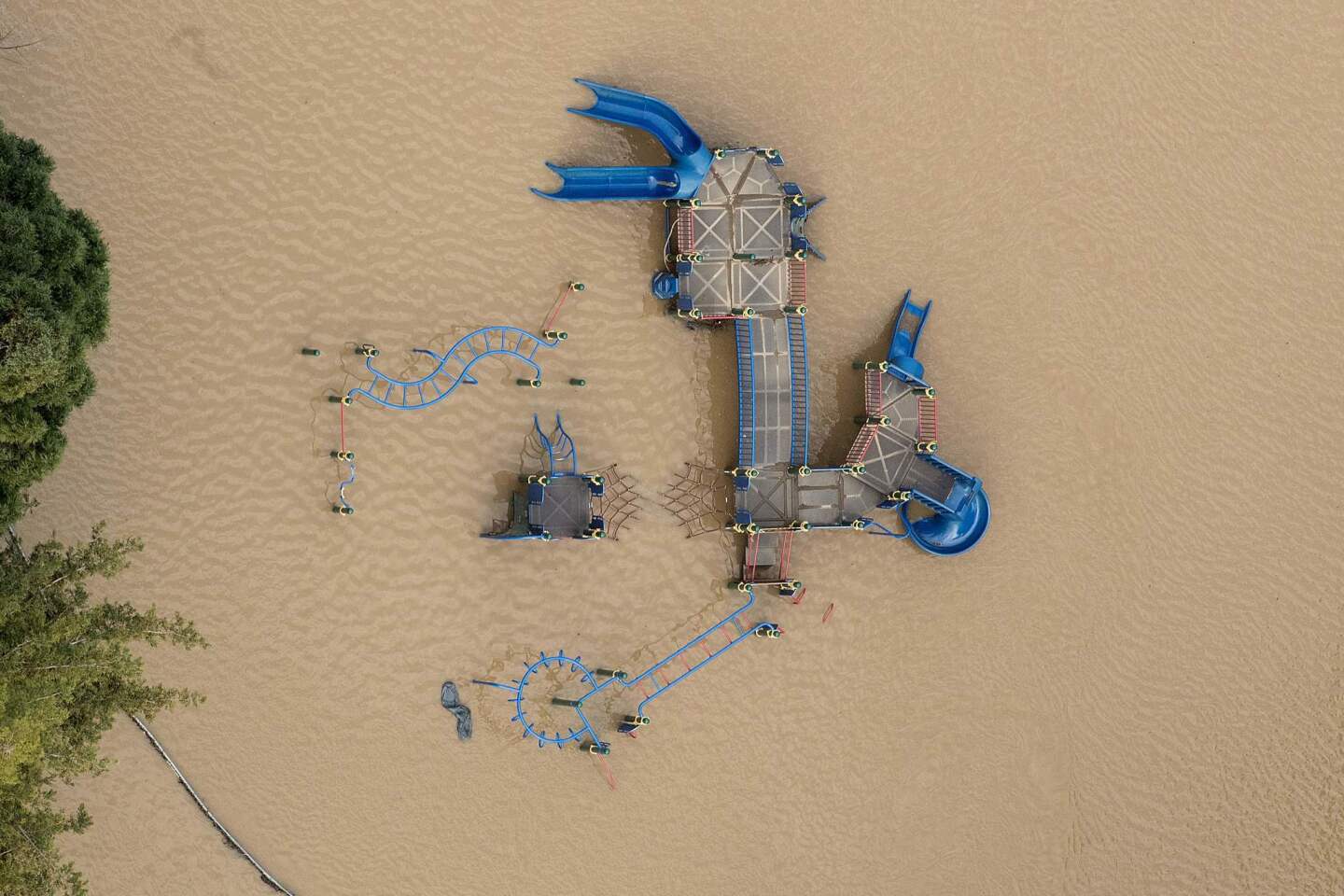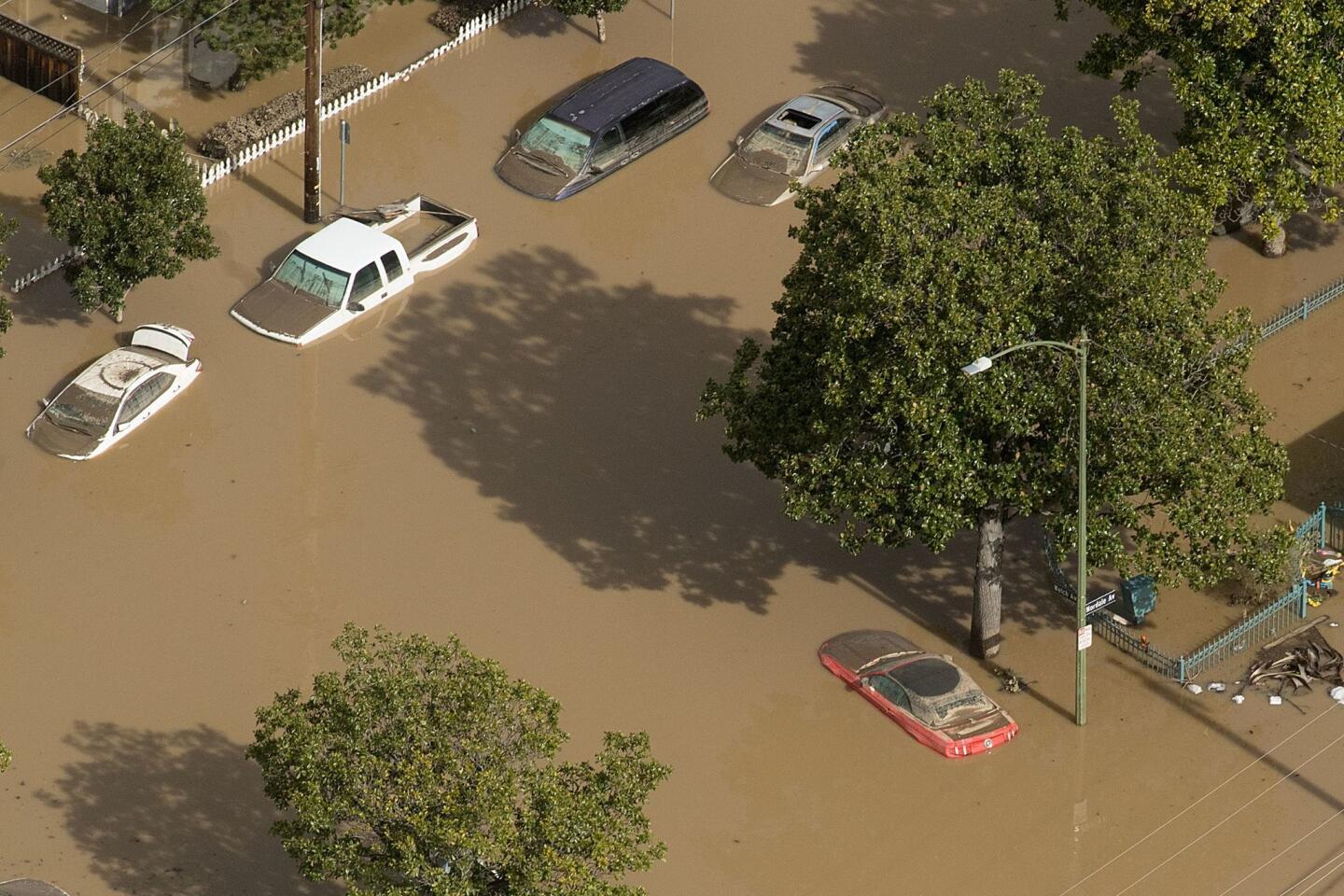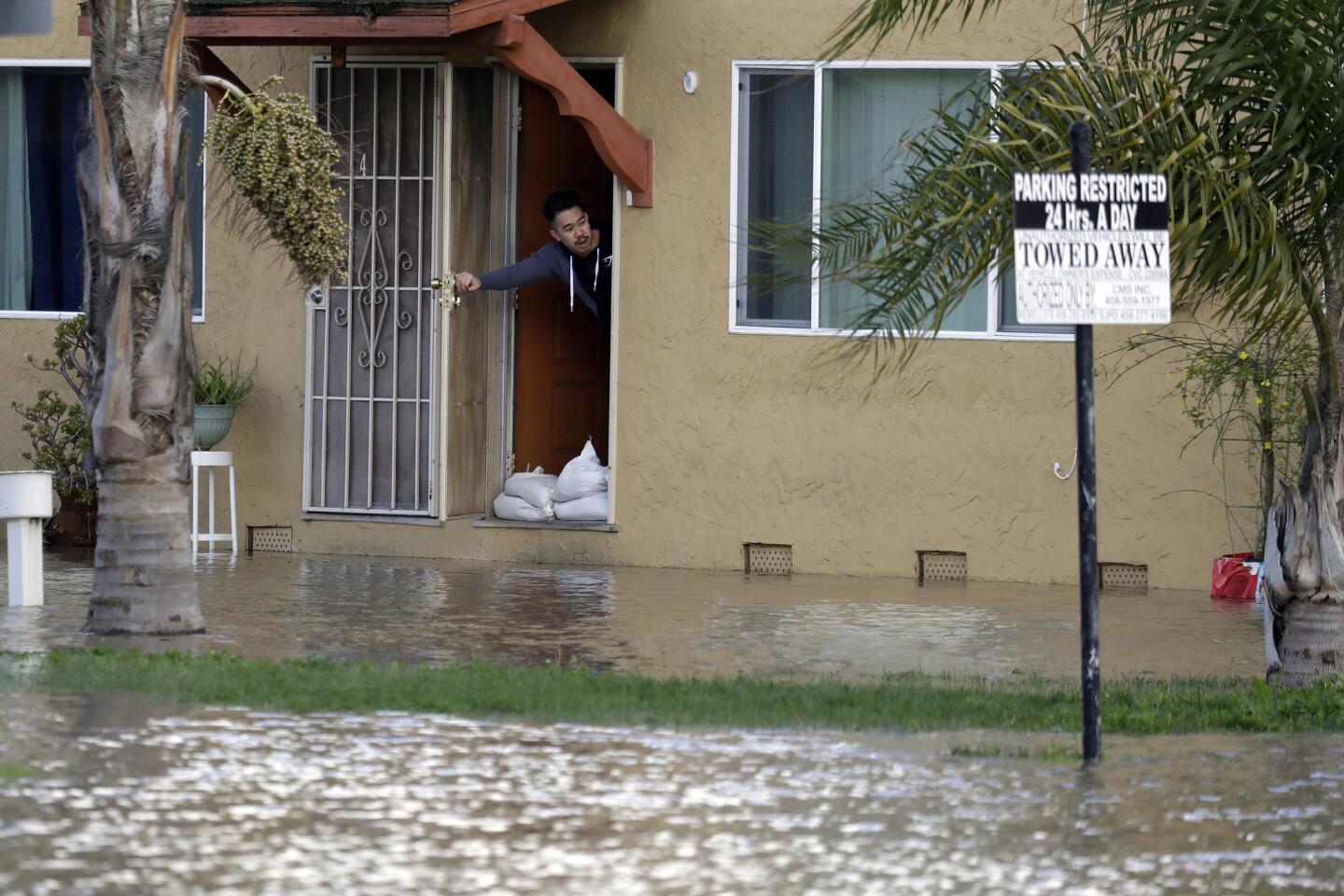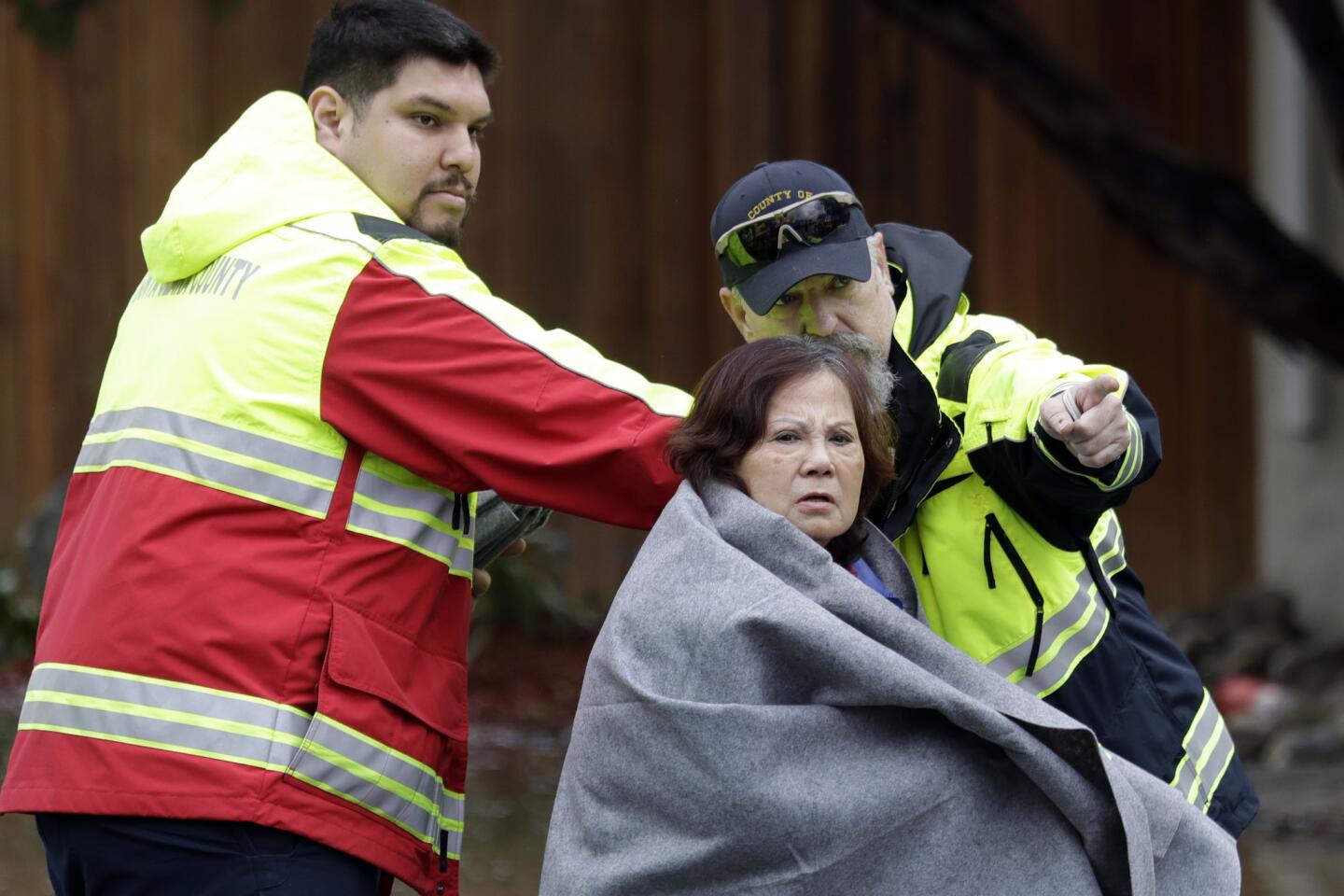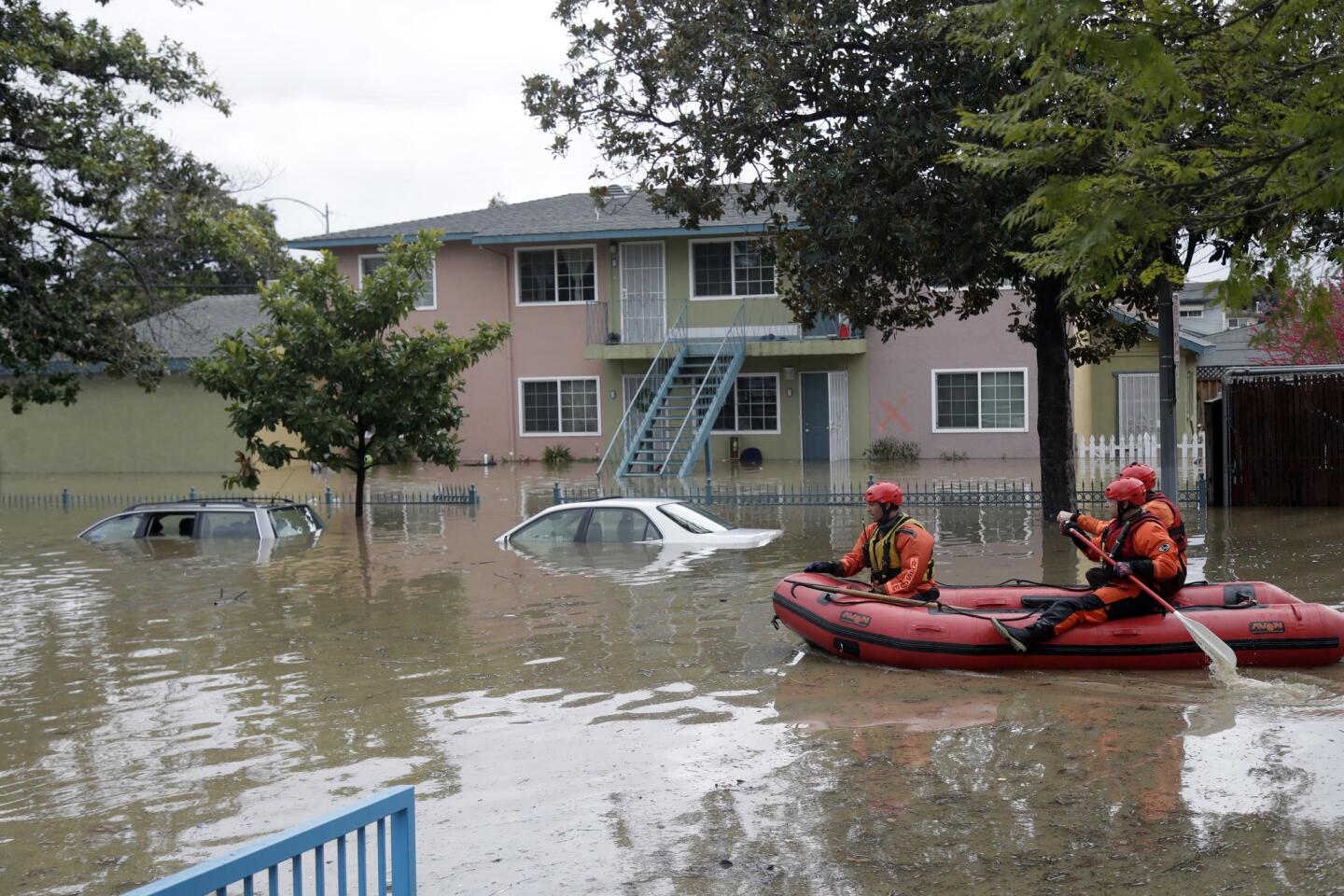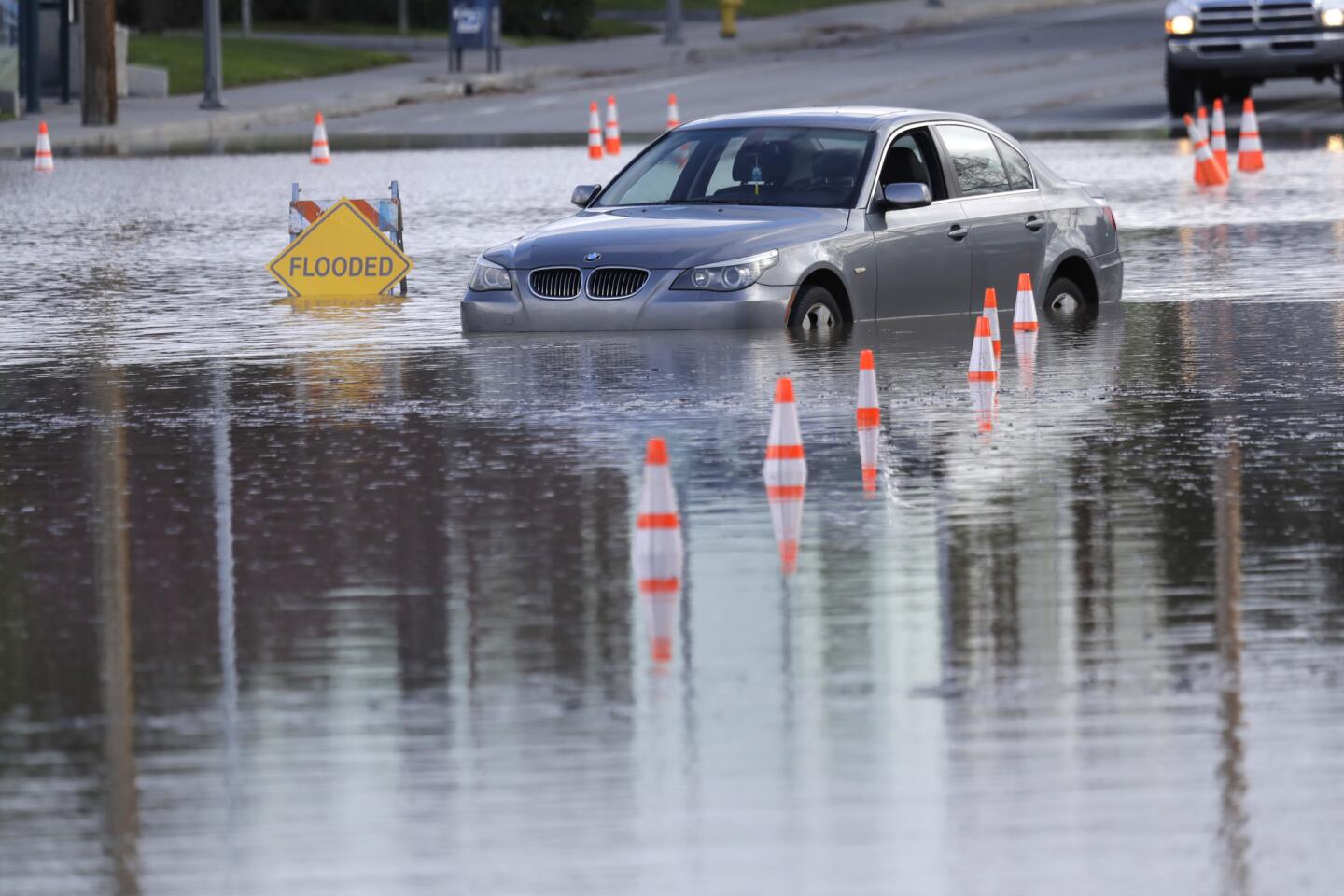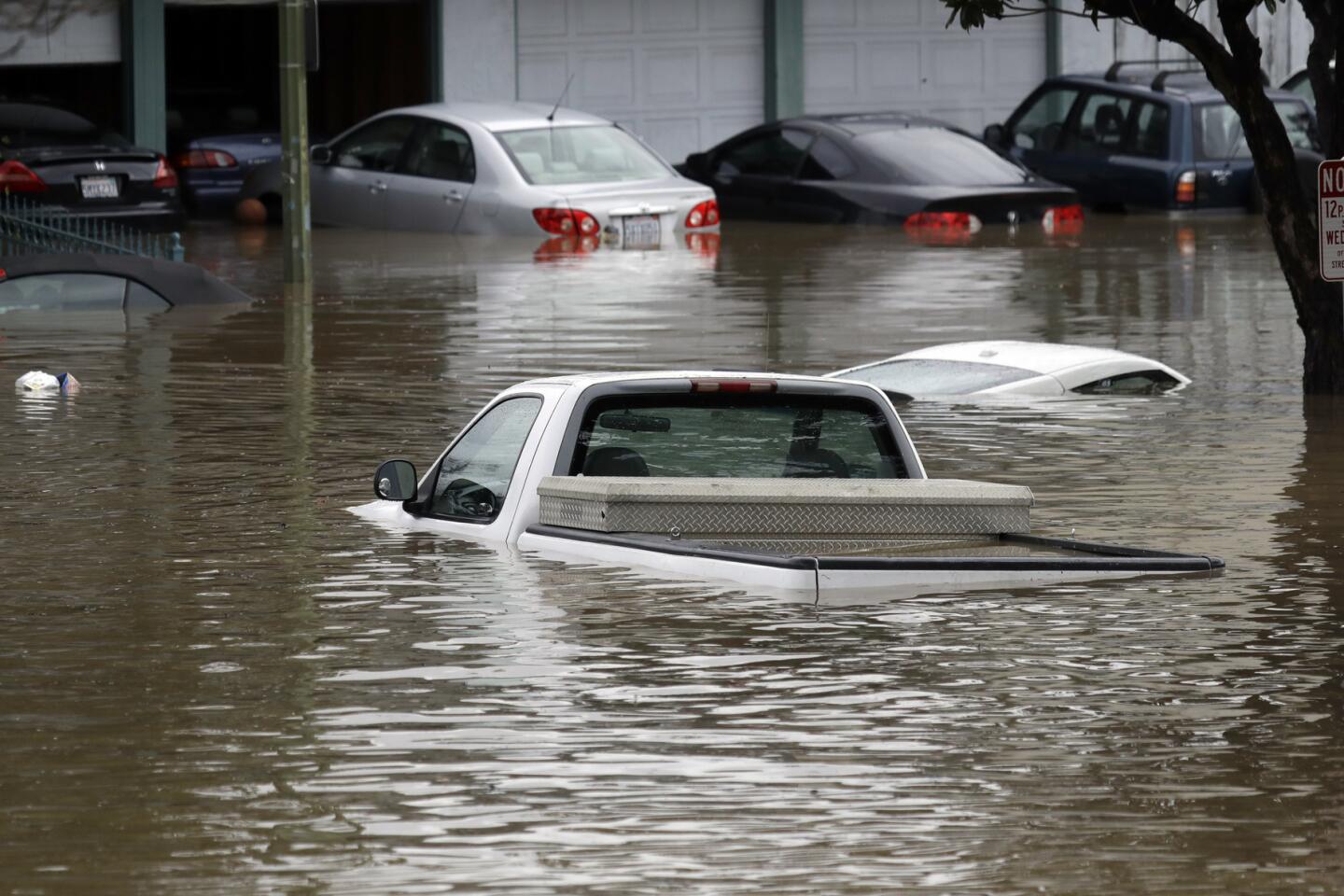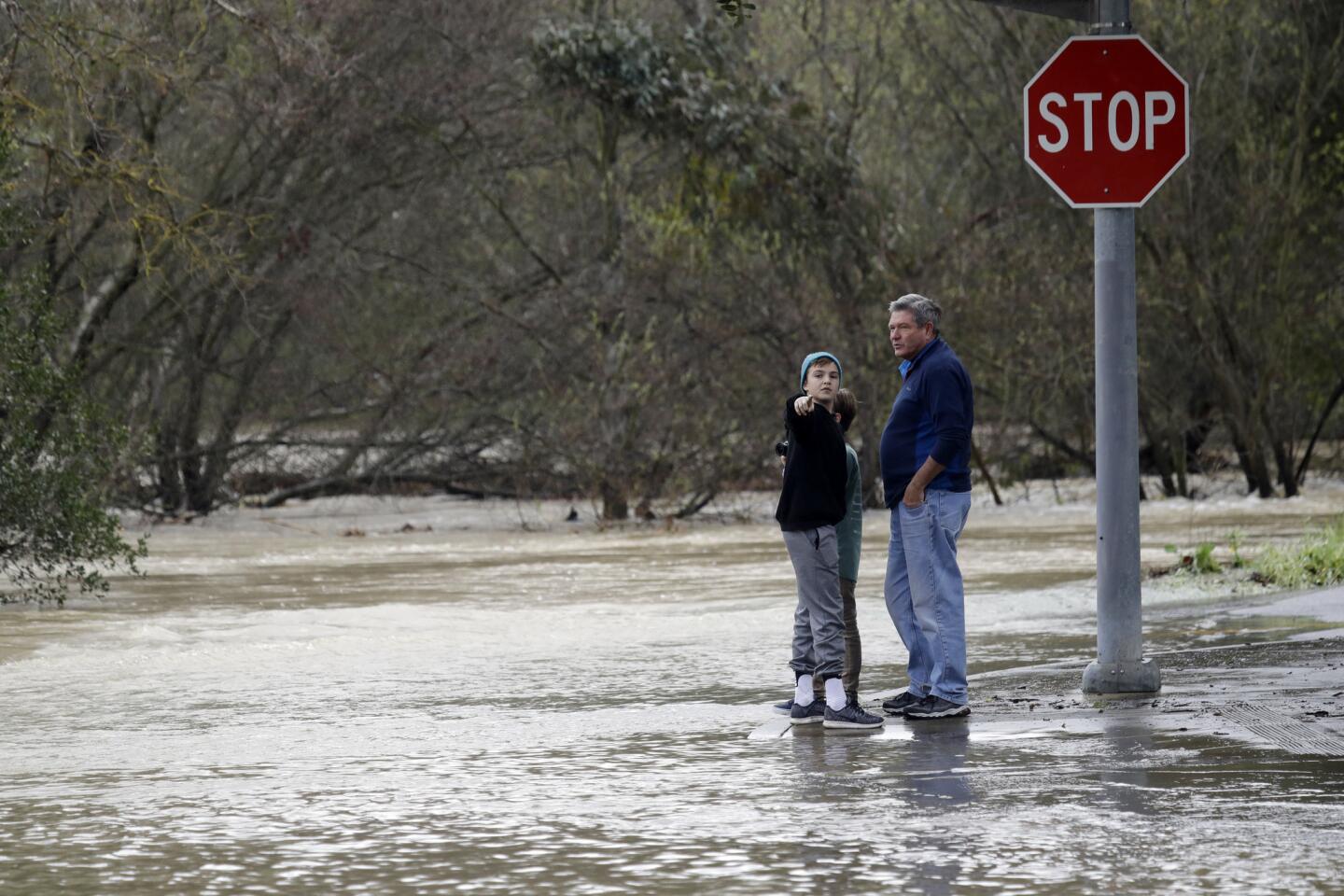Hit by worst floods in a century, San Jose got little warning of impending disaster
- Share via
Reporting from San Jose — Over the last two weeks, heavy rains pushed water levels at Santa Clara County’s largest reservoir into the danger zone, with officials warning it could overflow.
That happened over the weekend, sending massive amounts of water into the Coyote Creek, which runs through the heart of San Jose.
By Tuesday, the creek was overflowing at numerous locations, inundating neighborhoods, flooding hundreds of homes and forcing the frantic evacuations of more than 14,000 residents, who remained out of their homes Wednesday.
The worst flooding to hit Silicon Valley in a century left San Jose reeling and residents angry about why they were not given more warning that a disaster was imminent. Even city officials on Wednesday conceded they were caught off guard by the severity of the flooding and vowed a full investigation into what went wrong.
“If the first time a resident is aware that they need to get out of a home is when they see a firefighter in a boat, then clearly there has been a failure,” said San Jose Mayor Sam Liccardo. “There is no question that we’ll need to do things differently next time.”
Late Wednesday, Assistant City Manager Dave Sykes said officials had learned that the information they had on the capacity of Coyote Creek channel was not accurate. He also said the city was working with the Santa Clara Valley Water District to determine whether debris caused blockages that contributed to flooding.
“The creek spilled over the banks faster and higher than anybody expected,” said city spokesman David Vossbrink.
Residents told harrowing stories of water flowing into homes and flooding streets. Many had to be rescued by boat. Some said they were surprised they did not get urgent warnings about the extent of the flooding.
“They didn’t say it was going to go up as high as it did,” said Louis Silva, 48. He said that his possessions were swallowed up in the flood and that the city should have warned people about the scale of the disaster with a cellphone text alert or by knocking on doors.
“They should’ve put the footwork in to show the urgency of the situation,” Silva said. “It hurt everyone. ... When Mother Nature shows up, she shows up.”
Dawn Rogers, 47, said she was in the mandatory evacuation zone but decided to hunker down instead of leave. She watched as firefighters took a boat down the street to rescue residents in homes that were flooded.
By 1 p.m. Tuesday, residents were rushing to fill up their cars with priceless valuables.
“It was scary,” Rogers said. “Being in a drought for all these years, you don’t ever think you’re ever in danger of a flood.”
Rob Souza, 49, thought he was prepared. He knew exactly where the floodwaters had previously risen on his William Street property, just west of Coyote Creek.
He spent eight hours Monday painstakingly building 3-foot walls of sandbags to protect his newly renovated cottage and his two-story home.
But by Tuesday morning, rising waters burst through the first sandbag wall, wrecking the cottage. Then Souza watched as the water rose to two feet above his home’s windowsill.
“It was like I was looking at an aquarium,” Souza said.
Then a window broke.
And then, Souza said, “it was all over.”
Anderson Reservoir, which is located in Morgan Hill about 22 miles south of downtown San Jose, had been releasing as much water as possible through its main outlet since Jan. 9, said Rachel Gibson, a spokeswoman for Santa Clara Valley Water District. The district was releasing water at a rate of 420 cubic feet per second through the reservoir’s outlet.
“We were trying to flood out as much water as we could in advance of any storms,” Gibson told reporters. “We have been pummeled by a number of storms since Jan. 9, so Anderson Reservoir was slowly filling up because more water was coming into it than we could practically let out of that outlet.”
Santa Clara water’s chief operating officer, Jim Fiedler, said his agency had been working in recent days with San Jose city officials on possible flood control options in case of a major event. He said the district had been in regular contact with city officials.
The situation came to a head over the weekend, when another round of heavy rain sent Anderson Reservoir over its tipping point, causing water to spill out of the lake and into Coyote Creek.
The first major flooding occurred Tuesday in the Rock Springs area of San Jose. San Jose firefighters paddled on rafts and waded through the chest-deep deluge, rescuing hundreds of residents trapped in homes and in trees.
Evacuation centers were set up at two community centers, where more than 300 residents stayed overnight. Two high schools were converted into overnight shelters, with dry clothes, food and cots.
Meanwhile, a damaged levee allowed water to flow onto U.S. 101 on Tuesday, forcing its temporary closure.
Coyote Creek slithers its way northwest from the reservoir to San Jose’s doorstep, where it proceeded to flood neighborhood after neighborhood, carving a destructive path through the heart of the city.
The creek crested to a height of 13.6 feet at a South San Jose river gauge point on Tuesday evening — nearly four feet above flood stage. The height shattered a previous record that had stood since 1922.
“This is a once-in-a-100-year flood event,” National Weather Service meteorologist Roger Gass said, referring to Coyote Creek’s surging height in South San Jose.
By Wednesday, the creek was no longer rising, but it was too late for some evacuees.
City officials said some residents could be allowed home as early as Wednesday night, though Liccardo had warned earlier in the day that the water was highly contaminated with fuel, oil and possible sewage and posed a potential health risk.
Officials said that on Thursday they would focus on assessing the damage and getting residents back home.
The approximately 14,000 people under mandatory evacuations hailed mostly from central San Jose. Evacuation advisories were also issued to 36,000 residents in a zone that covered a business and industrial area along a roughly seven-mile stretch of Coyote Creek.
By Wednesday evening, city officials had lifted some mandatory evacuations for homes north of Interstate 280. They also revised the number of residents impacted by evacuation advisories down to 22,000.
“We haven’t really had anything quite like this before,” Vossbrink said.
Times staff writer Lin reported from San Jose, Rocha and Stevens from Los Angeles. Times staff writer Matt Hamilton contributed to this report.
ALSO
High winds, rain wreak havoc in Burbank and Glendale
Oroville hoping to turn dam crisis into a tourism opportunity
13-year-old girl in coma after being hit by falling tree during storm
UPDATES:
6:15 p.m.: This article was updated with new information about evacuations that have been lifted.
3:35 p.m: This article was updated throughout with more details and new approach.
2:25 p.m.: This article was updated with information about teams checking on when returns could occur.
1 p.m.: This article was updated with information about possible causes of flooding.
12 p.m.: This article was updated with details about the flooding and officials saying there is no timetable for residents to return home.
10 a.m.: This article was updated with the number of people under mandatory evacuations and comments from David Vossbrink, a San Jose spokesman.
8:45 a.m.: This article was updated with an estimate of how many people live in the mandatory evacuation zone.
8 a.m.: This article was updated with more details on road closures and evacuations.
7:30 a.m.: This article was updated with officials closing the 101 Freeway.
This article was originally published at 2:20 a.m.
More to Read
Sign up for Essential California
The most important California stories and recommendations in your inbox every morning.
You may occasionally receive promotional content from the Los Angeles Times.
